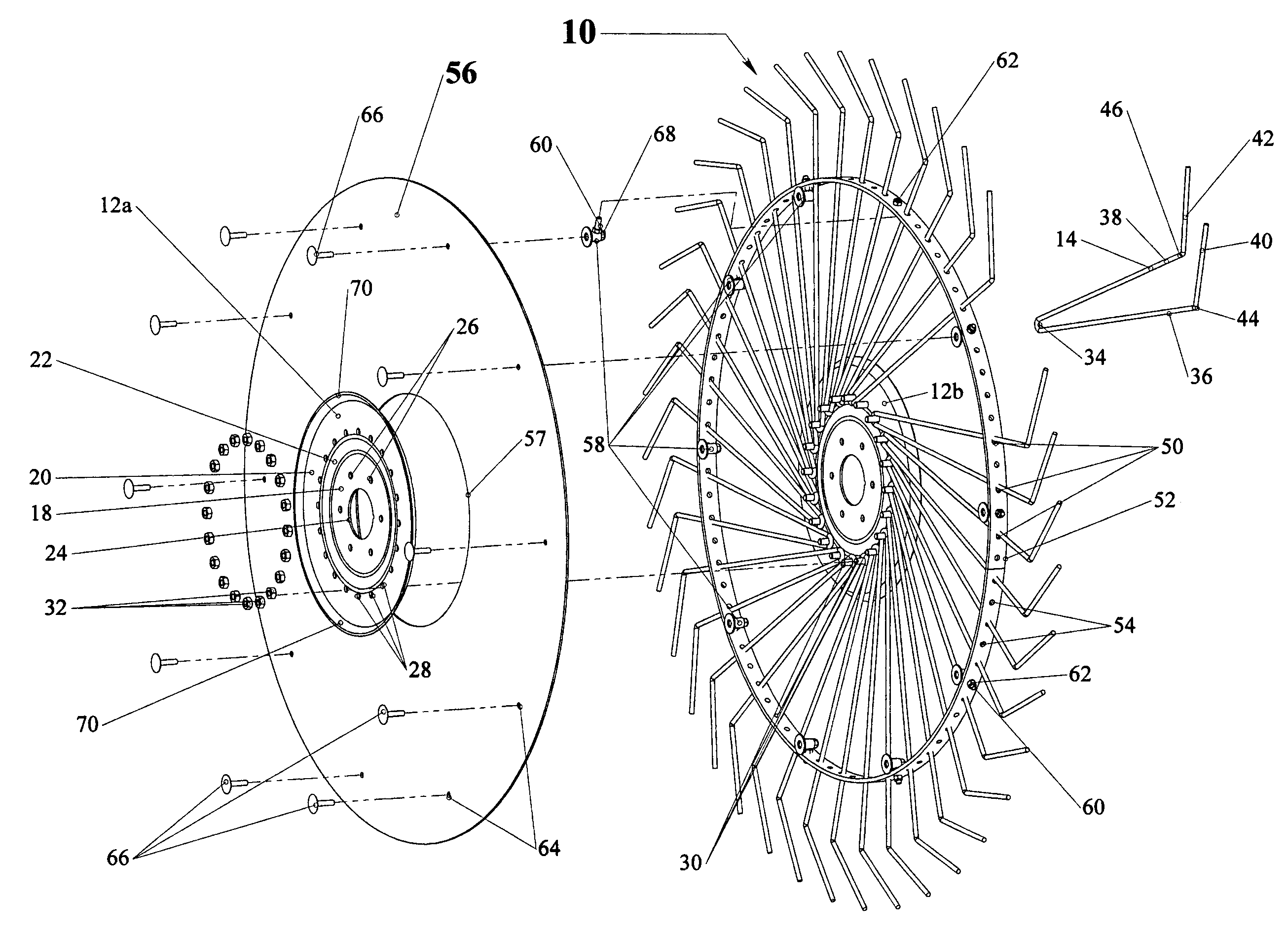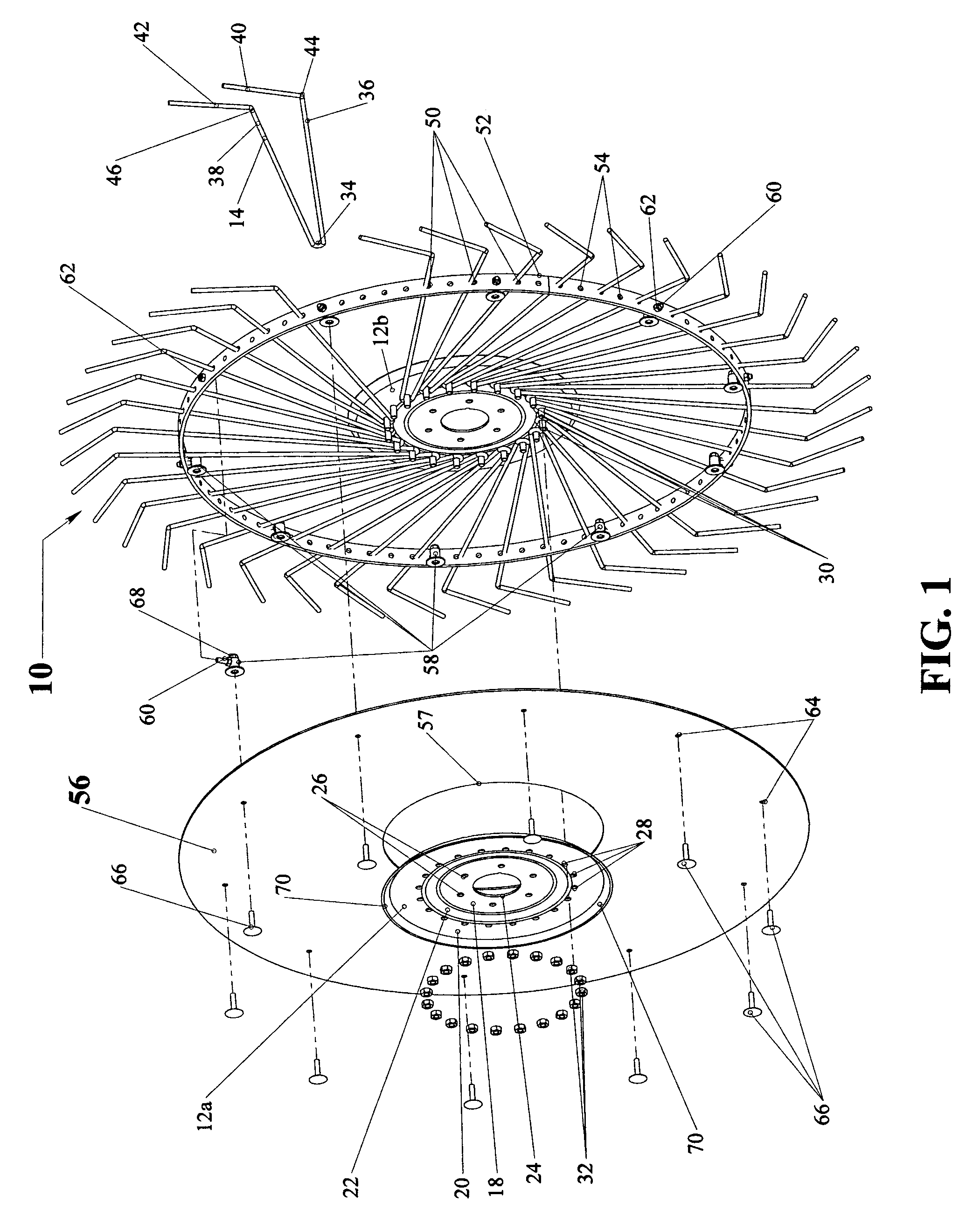Rake wheel
a technology of rake wheel and rim, which is applied in the field of rake wheel, can solve the problems of needing replacement of the wheel, the aperture in the rim securing each tine in position will gradually wear and become enlarged, and the patent did not address the problem of bearing aperture wear, so as to reduce the amount of crops that blow. , the effect of prolonging the functional life of the wheel
- Summary
- Abstract
- Description
- Claims
- Application Information
AI Technical Summary
Benefits of technology
Problems solved by technology
Method used
Image
Examples
Embodiment Construction
[0017]Referring now to the drawing, the rake wheel of the present invention is designated generally at 10 and includes a pair of identical and opposing flanges 12a and 12b from which a plurality of tines 14 extend. Tines 14 extend through a ring-shaped rim 16 for securement in the desired position for raking materials on the ground.
[0018]Because flanges 12a and 12b are identical, only flange 12a will be described in detail herein. Flange 12a is a disk-shaped member having a flat inner ring 18 and a flat outer ring 20. Outer ring 20 is parallel to and spaced radially and orthogonally outwardly from inner ring 18, and is connected to the inner ring by a sloped annular portion 22. Inner ring 18 has a central opening 24, which receives a shaft on an implement (not shown) so that the wheel 10 may be rotatably mounted on the implement in a conventional fashion.
[0019]Inner ring 18 extends radially outwardly from central opening 24, and has a plurality of apertures 26 formed therein, spaced...
PUM
 Login to View More
Login to View More Abstract
Description
Claims
Application Information
 Login to View More
Login to View More - R&D
- Intellectual Property
- Life Sciences
- Materials
- Tech Scout
- Unparalleled Data Quality
- Higher Quality Content
- 60% Fewer Hallucinations
Browse by: Latest US Patents, China's latest patents, Technical Efficacy Thesaurus, Application Domain, Technology Topic, Popular Technical Reports.
© 2025 PatSnap. All rights reserved.Legal|Privacy policy|Modern Slavery Act Transparency Statement|Sitemap|About US| Contact US: help@patsnap.com


